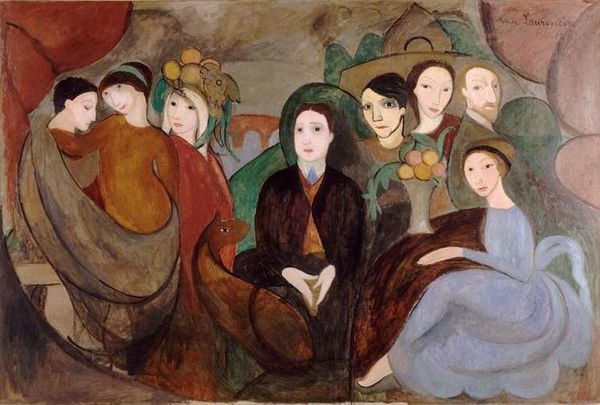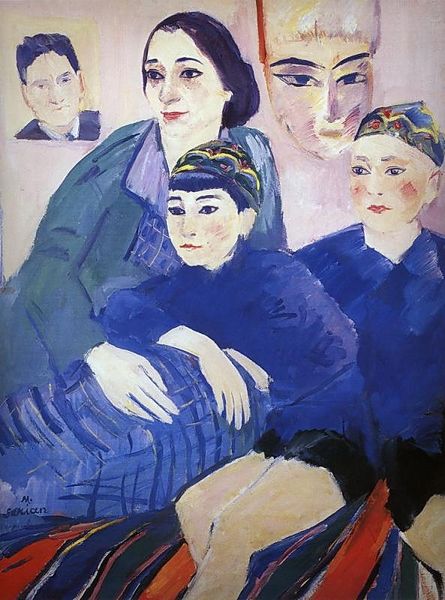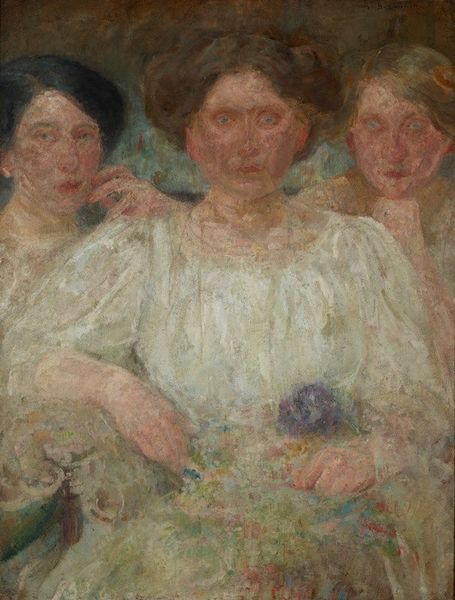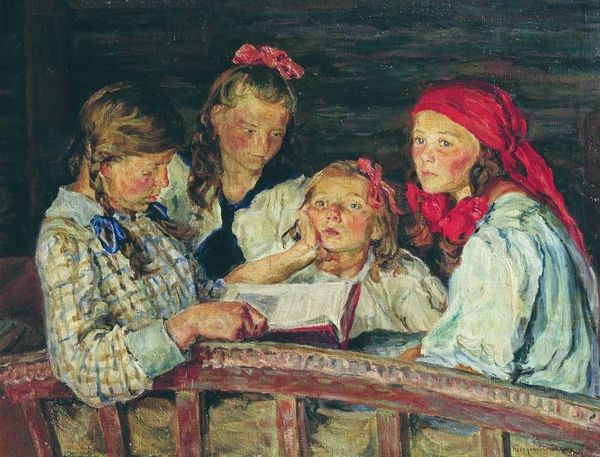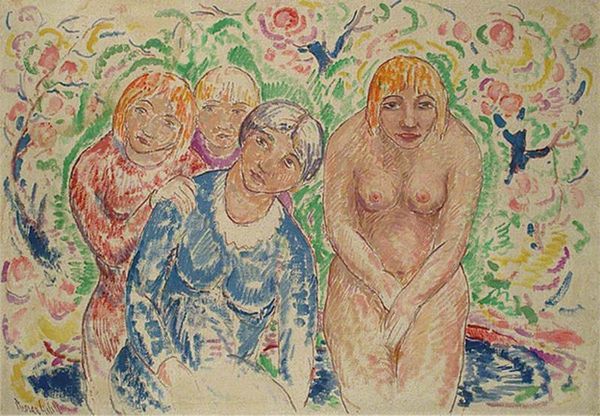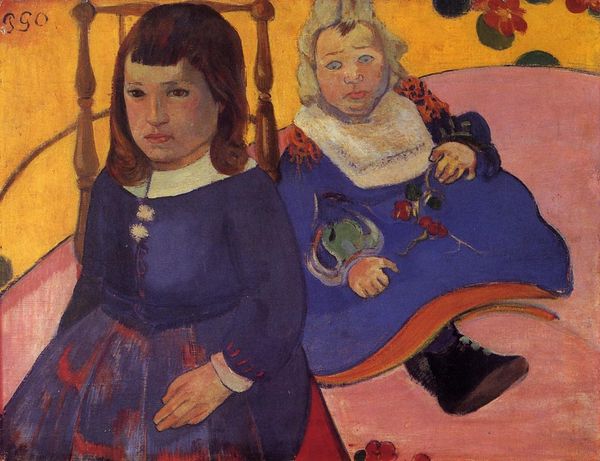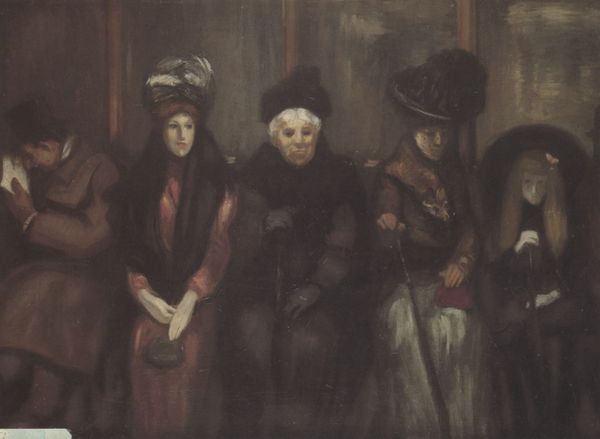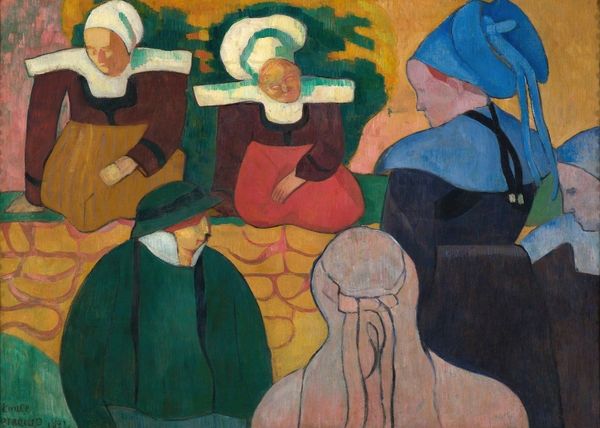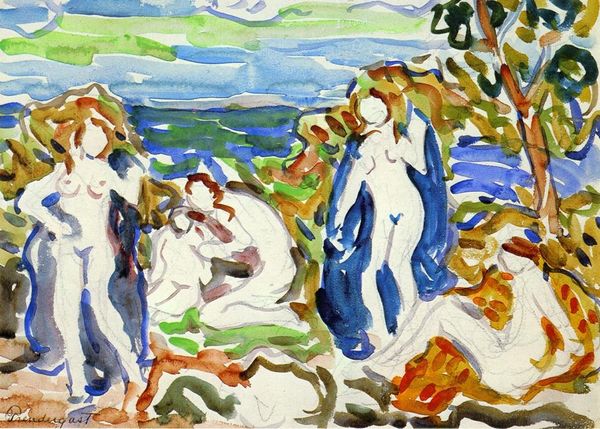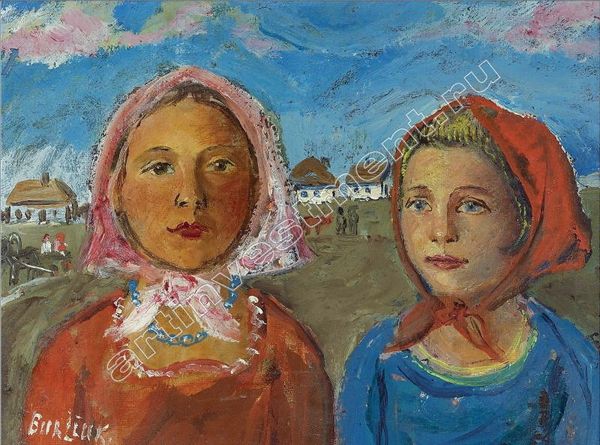
Copyright: Public domain
Curator: Here we have Charles Cottet's "Four Breton Women at the Seashore," painted in 1893. He renders these figures with loose brushstrokes and an emphasis on their traditional garb. Editor: Immediately, I’m struck by the painting’s rather somber tone despite the coastal setting. The women's faces, framed by those white caps, possess a gravity that pulls you in. There’s something compellingly stoic about their collective gaze. Curator: Cottet was very interested in the representation of regional identities in France. Brittany, in particular, held a fascination as a place retaining distinct cultural practices. He painted it at a time when regional cultures were often viewed by the Parisian elite as backward, as resistant to modernity. Editor: Exactly. And their clothing here reads as a symbol of resistance, a refusal to assimilate into a homogenized national identity. Are they upholding tradition in the face of these modernizing pressures, clinging to a specific regional cultural identity? The positioning of these women almost seems to be confronting the viewers. Curator: Cottet's technique, characterized by visible brushwork, echoes the Impressionistic style, but he’s using it to capture something beyond just the surface appearance. These are plein-air sketches. We see the sea vaguely painted in the background but the painter seems interested only on their clothes and faces. Editor: Absolutely. The stark white of the caps, against the darker shades of their clothing and the turbulent sea behind them creates a striking contrast, immediately drawing your eye towards the women's faces. It emphasizes their expressions, which, again, seem filled with a sense of quiet strength. There is an overwhelming feel of group portraits but this only strengthens the fact of tradition in their community, isn't it? Curator: It could be argued that Cottet romanticizes these women, creating an idealized image of Breton identity, or that he acknowledges that group. But still it can be examined as a cultural document of the period. Editor: Perhaps. What I find most impactful is the way he captures a specific moment in time. I appreciate how it invites us to consider the complexities of cultural representation. This painting, while seemingly straightforward, offers us an insight on that pivotal juncture in modern french history, where identity itself became a stage of conflict. Curator: Indeed, looking closely gives the picture, with all its tensions, much richer substance.
Comments
No comments
Be the first to comment and join the conversation on the ultimate creative platform.

